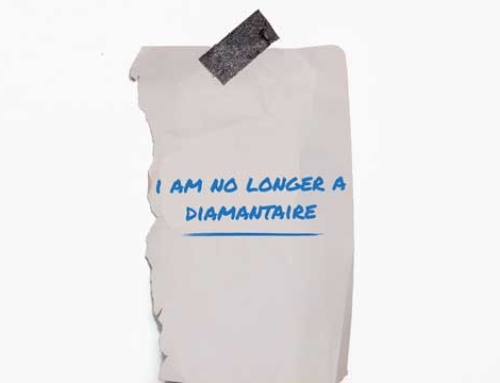This was the year in which synthetic diamonds went mainstream. De Beers launched its Lightbox brand, the US Federal Trade Commission (FTC) relaxed its rules for describing lab-grown diamonds, and the likes of Macy’s and JCPenney started stocking synthetics for the holiday. These are some of the online stories that attracted lots of readers during the past year.
1. Lab-Grown Diamonds Are Diamonds, Says FTC
The FTC made wide-ranging changes to its jewelry guidelines following consultations with the industry. This was the initial story following a skim of the commission’s 161-page conclusions. Among those was a decision was to drop the word “natural” from its definition of a diamond to reflect the fact that mined stones were no longer the only product available. The synthetics sector saw that as a victory, but the news didn’t change the fact that marketers must disclose clearly that a diamond is man-made.
Flawless fact: The FTC’s previous definition had been in place since 1956.
2. A Defining Moment for Lab-Grown Diamonds
Synthetics suppliers will almost certainly use the new definition for marketing purposes. (Diamond Foundry already has.) The new guidelines also prompted the World Jewellery Confederation (CIBJO) to rethink its own definition of diamonds, though it later decided to leave it unchanged for now.
Flawless fact: The FTC’s new definition put it at odds with most major standards, including the International Organization for Standardization (ISO), CIBJO’s Blue Book, and the “Diamond Terminology Guideline” that nine natural-diamond organizations published in January.
3. Martin Rapaport on De Beers’ Synthetics
De Beers only has its own corporate interests at heart when it takes strategic decisions, Martin Rapaport argued. That includes its launch of Lightbox, a fashion-jewelry line featuring lab-grown diamonds.
Key quote: “The government of Botswana should be asking De Beers: Where is your exciting new marketing program for natural diamond fashion jewelry?”
4. Who Are the Top Rough Buyers?
Rough diamonds go on a long and winding journey before reaching their final polishing destination. This excerpt from the Rapaport Research Report looked at who’s buying the goods, and where they send them for processing. It also presented a full list of the 124 companies buying from De Beers, Alrosa, Dominion Diamond Mines and Rio Tinto.
Flawless fact: India cuts and polishes 80% to 90% of the world’s diamonds, while an estimated 84% of rough stones pass through Antwerp.
5. Melee Parcel Contains Just One Natural Stone
This was the largest percentage of undisclosed synthetic melee the GIA had discovered in a parcel, according to gemologists at the institute. Of 1,102 small diamonds in a package the GIA received for testing, 1,092 were definitely synthetic, nine were not eligible for examination, and just one was natural.
Flawless fact: Fraudsters often add a few synthetic diamonds to boost the size of a melee parcel while keeping the majority natural — a practice known as “salting.” In this rare case, the lab-grown diamonds vastly outnumbered the mined ones.
6. De Beers Destroying Transparency in the Diamond Industry
De Beers is obstructing the industry’s source-verification efforts by preventing its clients from disclosing the source of the goods they buy from the miner, Martin Rapaport contended in an address in Las Vegas in June. The producer is “using its market power to restrain competition in the market for legitimate, source-certified polished diamonds,” he added in this written statement. De Beers said this month it was proposing to loosen the rules.
Flawless fact: 42% of the world’s legitimate diamond production in 2017 came from De Beers.
7. 1.5ct. Synthetic Diamond Sells for $32
Cards Against Humanity is more famous for its politically incorrect party games than for its role in our industry. It jokingly dipped its toe into diamond waters for Black Friday, selling a 1.5-carat lab-grown stone from Brilliant Earth for $32, or 99% off its original price. It offered free returns, as 50% of marriages end in divorce, it explained.
Key quote: “If anyone from Brilliant Earth is reading this article, you should know that I am friends with lots of single women aged 23 to 38 and I will continue to advertise on your behalf,” said Jane Benn, community manager at Cards Against Humanity.
8. GIA Spots Broken Diamond Glued Back Together
Whoever stuck these two halves of a diamond together would deserve an award for innovation had they not also apparently been cheats. The GIA received what looked like a green diamond — weighing in at 1.38 carats — but quickly discovered it couldn’t grade the stone because it had a line of an “unknown adhesive” running down the middle. The institute had never seen anything like this before.
Flawless fact: The GIA can only grade a diamond to which the 4Cs apply. That wasn’t the case here, as the carat weight would have comprised the two halves, plus the substance binding them.
9. Woman Says Kay Jewelers Stole Her Ring
Signet Jewelers’ brands have had to deal with several potential public-relations disasters in recent years, but it handled this one smoothly. Requitta Darshae East, a customer at Kay Jewelers, claimed the retailer had stolen rings she had taken in for servicing. Her furious Facebook post went viral, prompting many others to comment with reports of their alleged bad experiences of Kay’s customer service. Kay, which had sent the rings to the wrong store, flew two senior executives to East’s home in Chicago and made peace with her.
Key quote: “There is a way to rectify any and every situation,” wrote East.
10. How De Beers Sees Its New Synthetics Business
De Beers CEO Bruce Cleaver revealed how Lightbox would focus on fun, colorful stones with no grading reports. The company wasn’t just launching a new product line; it was also sending a message to the trade about what consumers want from lab-grown diamonds, timed meticulously for the start of the JCK Las Vegas show.
Flawless fact: Lightbox could generate revenue of $150 million to $200 million per year once its production plant in Oregon is fully functional in 2020, according to Cleaver.







